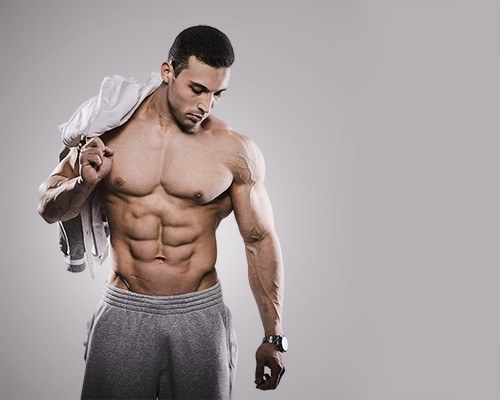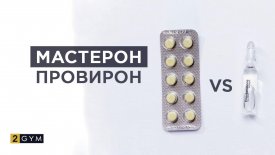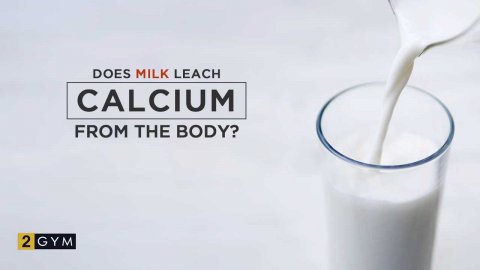The first was conducted in Europe (in the Netherlands, to be precise, but it covered most of the European Union countries), and the second – in the USA. I decided to compare them – and that's how this article came about.
Introduction
The United States study turned out to be much more representative – 2385 people were surveyed. In fact, this was the study with the largest sample size in the history of anabolic steroids.
The European study was more modest, but it covered a broader range of questions. Europe seems closer to us, but it is also interesting to know the preferences of Americans, as I often hear that we "use all the wrong things, while across the ocean..."
Overall, Europe and America were close in their approach to planning "courses" and post-cycle therapy (PCT). However, some differences do exist.
Also, you might have noticed that I use the term "anabolic steroids" instead of the abbreviation AAS. This is a new trend – to call androgens simply anabolic steroids.
As far as I know, the classification has not been changed yet, but even specialists no longer separate androgens when it comes to synthetic drugs. Actually, this makes things easier in some ways.
Popular Anabolic Steroids
It must be said that the answer to the question about the most popular anabolic steroid lies on the surface – it is testosterone. In the USA, 81% of respondents regularly use testosterone enanthate, and in Europe – 80% (here, however, it refers to all esters combined, but this does not change the essence).
The "number two choice" in both the USA and Europe is nandrolone. Approximately 67% of respondents in both regions regularly use it. However, in the USA, two esters of nandrolone are common – decanoate and phenylpropionate, whereas in Europe – only "deca."
This is not surprising, as nandrolone decanoate is still legally produced in the Old World, while "phenyl" can only be obtained from China. If testosterone is clear – without it, a "course" is not a "course," the confident second place for nandrolone is.
On the one hand, this is a tribute to tradition – "test" plus "deca" and "methane" can indeed be considered a powerful combination for gaining mass. But, in my observations, nandrolone suits no more than a third of those who use it; for the rest, it only causes problems.
Regarding methandienone: in the USA, it confidently shares third place with trenbolone – 50% each. However, European users of anabolic steroids did not mention it at all! Nor did they mention turinabol, which is equally surprising.
By the way, Europe turns out to dislike oral agents: oxandrolone – 26%, oxymetholone – 14%, and metasterone is not on the list of preferences either.
However, trenbolone is significantly more popular in Europe – 64% of respondents regularly use it (compared to 50% in the USA) – and stanozolol: 63% in Europe and only 38% in the USA.
Let me touch on some other anabolic steroids: boldenone – about 40% in both Europe and the USA, drostanolone – 19% in Europe and 32% in the USA. And only for the United States: oxymetholone – 31%, turinabol – 19%, metasterone ("Superdrol") – 15%.
Other Drugs
This is where the biggest difference between Europe and the USA lies. It is so significant that I did not compare them, but instead, I divided them into separate paragraphs.
USA
Aromatase inhibitors (AIs) are in first place among the "others" across the ocean. Using AIs with testosterone is a super idea for those who have a high tendency to aromatize and the need for hormone replacement therapy
But remember the confident second place of nandrolone – two-thirds do not disdain using it. Yet, nandrolone can easily provoke gynecomastia, and aromatase inhibitors will not help here. I think many overseas AI enthusiasts do not even suspect this.
Growth hormone – only 14% of respondents turn to it. SARMs (16%), clenbuterol (18%), and chorionic gonadotropin (29%) rank higher. I note that using the latter during a "course" is much more justified than after it.
Lower down are triiodothyronine (8%) and insulin (5.5%), peptides (more precisely – other peptides) – less than five percent combined.
Europe
Here, growth hormone is in the first place – 36% of respondents regularly use it. This is not surprising – synthetic somatotropin is much more accessible in the Old World. Next come clenbuterol (30%) and triiodothyronine (23%) – showing that Europeans are concerned with "burning" fat. Only after them come antiestrogens.
In Europe, no one mentioned SARMs or peptide drugs. Nor insulin, which is somewhat strange. Moreover, the use of chorionic gonadotropin during a "course" was not mentioned either.
Recovery Drugs
In both the USA and Europe, the most popular drugs used during post-cycle therapy (PCT) were tamoxifen and clomid. Europeans also frequently turn to aromatase inhibitors, while AIs are used noticeably less often for recovery in the USA.
There is nothing surprising about the use of antiestrogens – something to restore luteinizing hormone (LH) production is vital. However, the second place was taken by chorionic gonadotropin, which I found quite strange, as this drug does not accelerate but slows down LH production recovery.
It was surprising to see the almost complete neglect of the post-course "crash" problem – only a little over ten percent of respondents tried to combat elevated cortisol levels. I suppose that others subconsciously use chorionic gonadotropin to solve this issue, but this is far from the best solution.
Using clenbuterol (or its more effective analog – terbutaline) would be much more justified.
If all the surveyed Europeans used something during PCT, a third of the respondents in the USA, it turned out, did not use anything at all for recovery!
This is justified, of course, if they all follow short "courses," but I doubt this is the case – more likely, it's a sign of plain incompetence.
Interesting Facts
74.4% of survey participants (USA) are convinced that anabolic steroids can be used for a long period without breaks and without harming health. The average duration of a "course" (Europe) was 10 weeks; the minimum – 2 weeks, the maximum – 48 weeks.
The average number of different anabolic steroids used during one "course" (Europe) is 3. More than half of the respondents (Europe and USA) said they would never admit to their doctors that they use anabolic steroids. However, there will be more about doctors below.
Only 4% of respondents (Europe and USA) stated that they did not experience any side effects from using anabolic steroids. The most common side effects were acne (38% of respondents), decreased libido (38%), gynecomastia (34%), erectile dysfunction (20%), aggression (11%).
Doctors and Anabolic Steroids
And here's an interesting point: those who want to try "anabolics" turn to doctors last. Strange, right?
Just try making an appointment with an endocrinologist and ask: "Doctor, I'm going to take anabolic steroids, what do you recommend?" Imagine the situation?
Now imagine how much interesting information you will hear in response. That's why – internet forums, trainers, "gym gurus," special books, and publications. What else is left? Doctors (and not only them), unfortunately, still refuse to understand that forbidden fruit is sweet.
The more it is forbidden, the sweeter it becomes. And yet, you can simply share information – if you have it. Or say who to turn to – if you don't have the information. And this will definitely pay off...
Please comment! I would love to know the answer to the question, what anabolic steroids do you prefer? And other drugs as well. Please share your preferences in the comments!





























Log in with ( Sign Up ? )
or post as a guest
They have a steroid guru - Dr. Thomas O'Connor - who explains the right things, but essentially nothing new. Yet many in the CIS still believe that they should emulate the West when it comes to steroids, studying their forums and copying fantastical, illogical combinations of drugs, thinking that such combinations have some sort of sacred meaning.
Personally, I believe that the Russian-speaking community has long surpassed the USA and Europe in terms of knowledge in this field (correct me if I'm wrong). If in the early 2000s we lagged behind due to lack of experience in use and administration, now the situation has radically changed.
Name me a current amateur from Russia who has achieved something internationally? It was in the early 2000s that our guys were the real hard workers. But now, everyone is betting on pharmacology. And there is a shortage of good products in Russia.
There are already too many factors involved, and pharmacology is not the main one here. As you said, nutrition plays a role on par with pharmacology, if not a major one.
And training, of course, Americans are in the lead here, it's their sport, it's their culture, for many years. But I was talking about the knowledgeable and safe use of pharmacology. It's not worth comparing ourselves to the West, especially to amateurs.
And results need to be evaluated in the long term, because you can use 1.5 grams of tren per week for 3 years straight and there will be results, but in the long term, health will be compromised. That's what I wanted to convey.
What I want to say is that the level of knowledge in the application of AAS has significantly increased over the past 10 years in the CIS countries.
The availability of analyses has played a significant role here as well. Ten years ago, hardly anyone was doing any tests, at least not in the provinces.
During PCT, people were taking tribulus at best, and most were coming off cold turkey, losing up to 10 kg of gains in the process. They relied purely on youth.
Back in the day, I tried almost everything, both orals and injectables. Different compositions and different combinations, more or less for 15 years. And the most important thing in the matter of intake is to make up for what you put into yourself.
There are plenty of gurus who said, just take it, and you can slack off, eat what you want, and train as you like, and everything will grow anyway :) well...
It's like putting a Mercedes engine in a Zaporozhets. It goes and then falls apart. You just need to work out every gram, every milliliter in the gym and with nutrition. That's how it is. Happy holidays and anabolic growth to everyone.